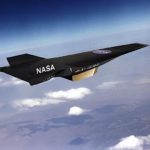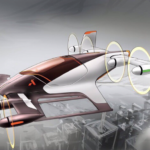Traveling the vast distances in space has always been a challenge. Traditional chemical rockets, while functional for trips within our solar system, are simply not practical for interstellar travel due to the immense distances involved. To give you some perspective, the nearest star to us (other than our Sun), Proxima Centauri, is about 4.24 light years away. Even at light speed, it would take more than four years to reach, but our current rocket technology only moves at a fraction of this speed. According to NASA, with today’s propulsion technology, it would take approximately 73,000 years to reach Proxima Centauri1.
Energy and Resources Problem
Not only do the immense distances pose a problem, but the fuel and energy required to power spacecraft over these distances is also a significant stumbling block. The longer the journey, in the context of current propellent technologies, the more fuel we’ll need, but the more fuel we carry, the more mass we have to propel. This creates a kind of paradox, often referred to as the ‘tyranny of the rocket equation’2. As a result, new propulsion systems are being researched and developed to overcome these issues, aiming to improve efficiency, reduce fuel mass, and ultimately enable us to travel farther and faster through space than ever before.
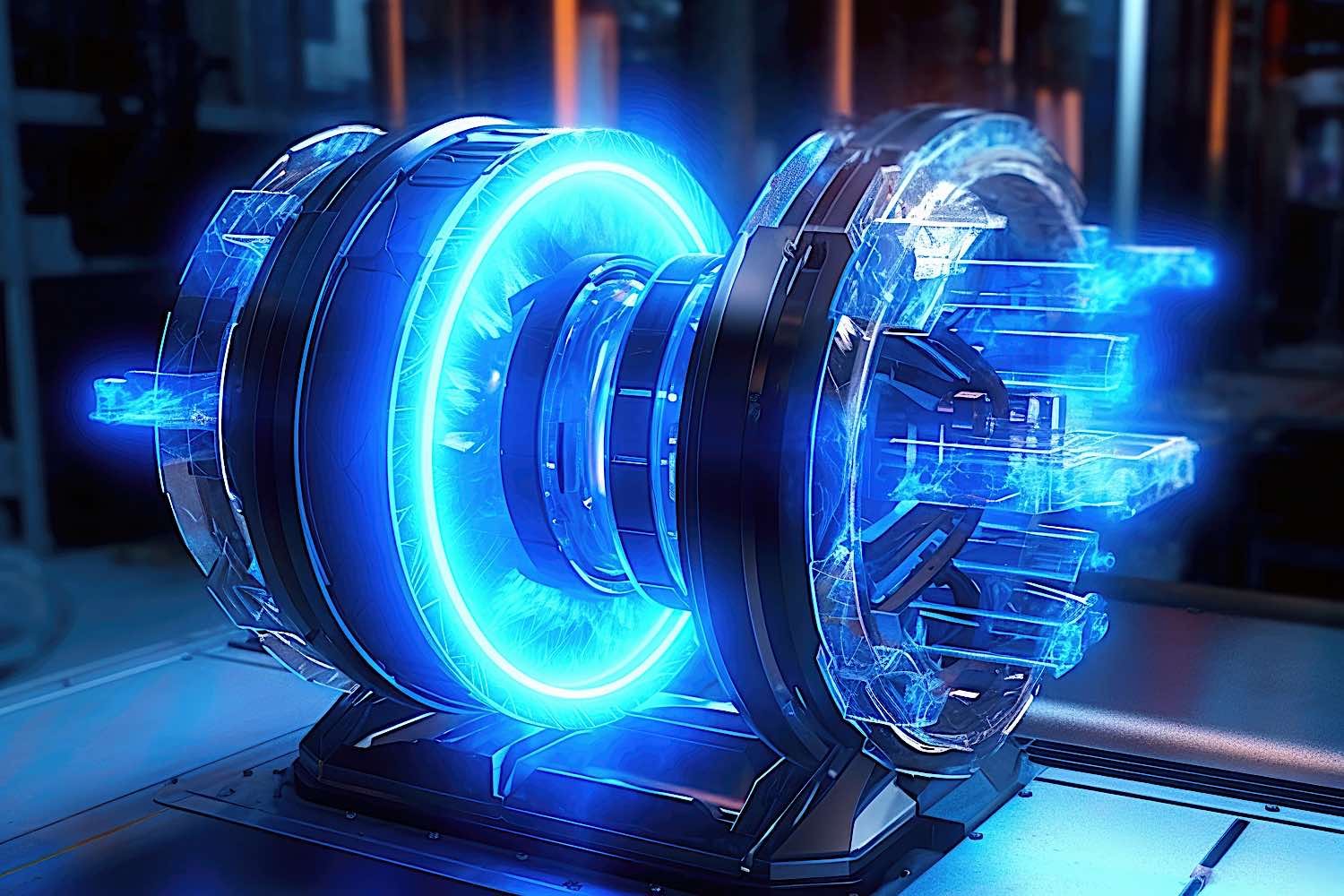
Space agencies and private ventures worldwide are pouring resources into developing systems that can propel spacecraft farther and faster, breaking the constraints previously upheld by traditional chemical rockets.
Going beyond the chemical rocket
These next-generation propulsion technologies are not just theoretical curiosities, but real, tangible and necessary developments that are beginning to redefine the way we think about and approach space travel.
Perhaps the most prevalent and respected systems currently in operation are chemical rockets. These engines function by the principle of reaction: ejecting mass rearward to generate thrust at the other end. Chemical propellants are incinerated and ejected to create this thrust—the very principle that the great Sir Isaac Newton discovered centuries ago (source: NASA Space Propulsion Basics). However, as we venture deeper into space, the limitations of chemical propulsion are becoming increasingly clear: they are inefficient, consume tremendous amounts of fuel, and have a finite limit to their speed and range. These limitations have driven engineers and designers like ourselves to explore and develop alternatives. Let’s dig deeper into the future of propulsion systems.
Ion Thrusters: A Practical Future of Deep Space Exploration
Ion thrusters, which use electric power to ionize and accelerate atoms or molecules, have marked their territory as a potentially game-changing technology. Excitingly, they are already in action. Since the 1960s, over 200 spacecraft have been equipped with this form of propulsion (source: NASA’s Evolutionary Xenon Thruster).
Ion thrusters work on a fascinating principle. In essence, what they do is take a gas, usually Xenon, and ionize it — or, strip it of electrons — in order to create plasma. This plasma is then subjected to a powerful electric field which accelerates the ions at high speed, and thrust is generated in the opposite direction, thanks to Newton’s third law of motion (Galileo Project, n.d.). This is somewhat analogous to how a conventional rocket engine burns fuel to produce a high-speed exhaust, and then uses the equal and opposite reaction to that exhaust coming out the back end of the rocket to propel it forward.
What sets ion thrusters apart, however, is their efficiency. Conventional chemical rockets, while capable of providing tremendous amounts of thrust, do so at the cost of burning through their fuel reserves incredibly quickly. Ion thrusters, on the other hand, expend their fuel much more slowly. This is because the speed at which the ions are expelled from the thruster is much higher than the speed of exhaust from a chemical rocket. Therefore, for a given amount of fuel, an ion thruster can generate thrust for a much longer period of time (NASA, 2020).
The drawback, of course, is that ion thrusters cannot produce the same level of thrust as traditional, chemical rockets. Ion thrusters generate slow, persistent thrust over long periods, resulting in unmatched fuel efficiency but lower overall speed. While this isn’t an issue for lengthy interstellar journeys, the lower thrust makes ion thrusters unsuitable for earth-to-orbit travel.
What are the other alternatives to chemical rockets and ion propulsion?
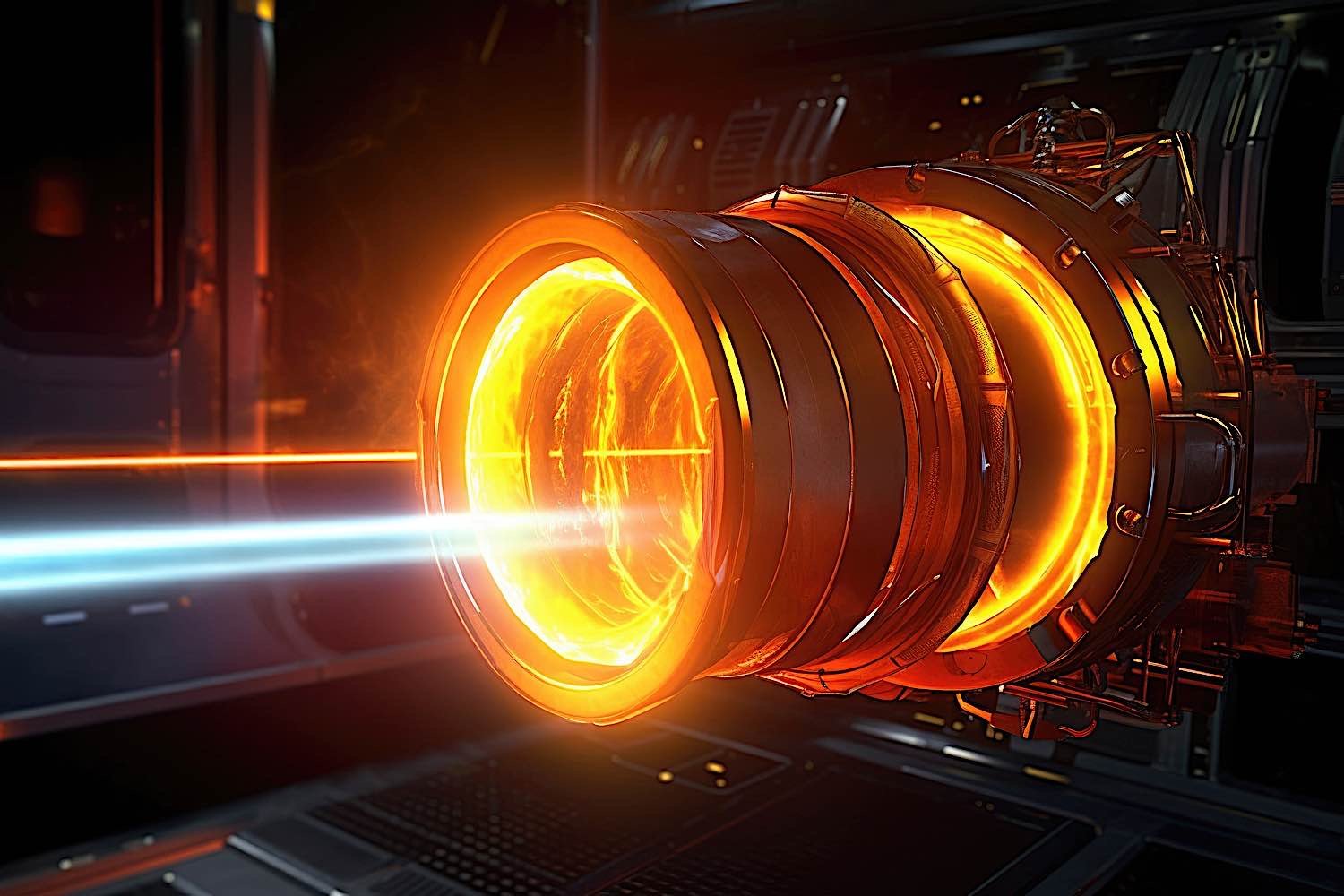
Plasma Rockets: Next-Generation Propulsion
Plasma rockets, like VASMIR (Variable Specific Impulse Magnetoplasma Rocket), stand to revolutionize interplanetary space travel. Unlike chemical rockets, plasma propulsion doesn’t rely on propellant, but instead uses electromagnetic fields to accelerate ions to create thrust.
Just imagine! Your spacecraft gliding through space on a beam of superheated gas at a fraction of the fuel consumption. It’s like swapping out a gas-guzzling truck for a high-performance electric car — same power, but far more efficient.
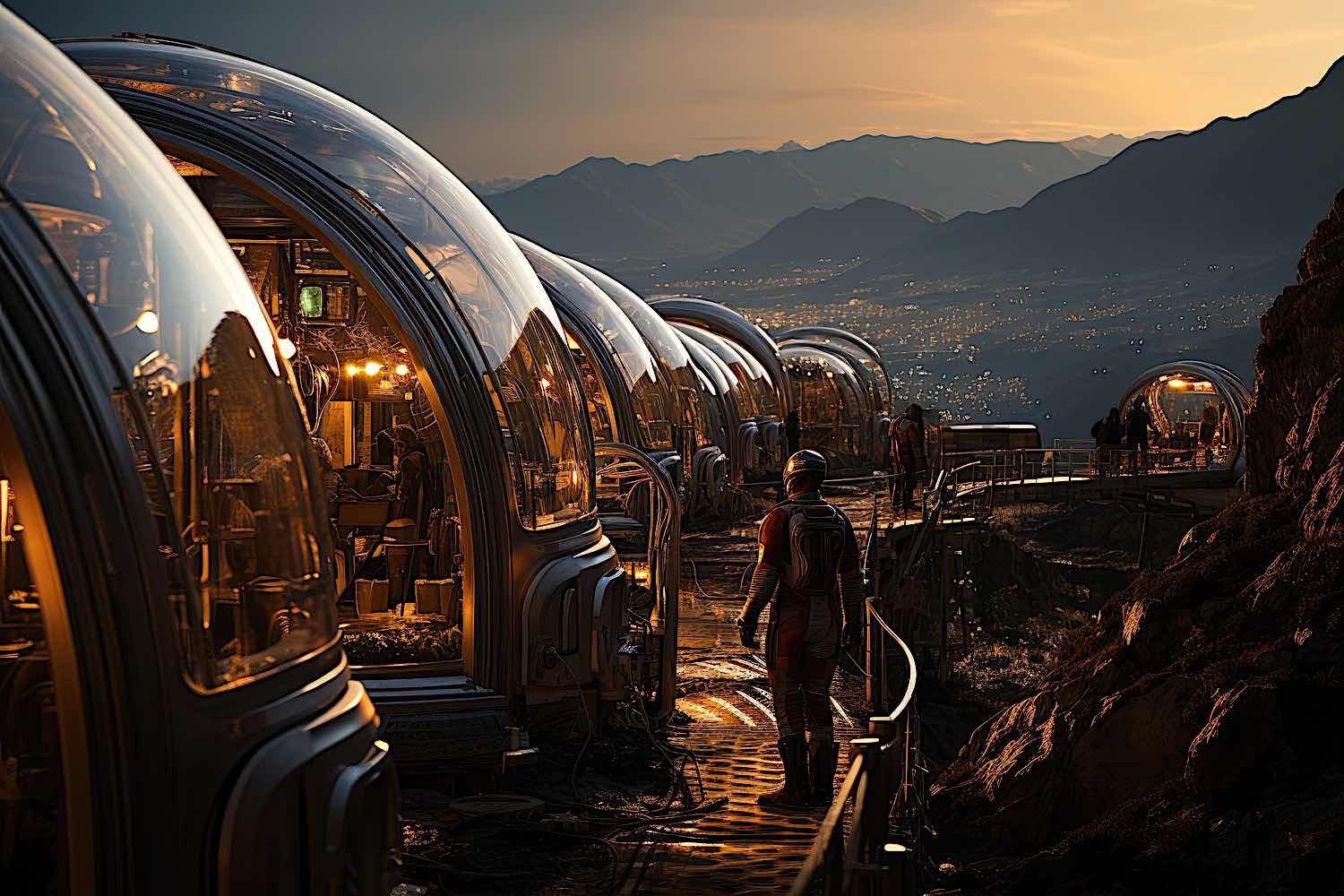
Fusion Propulsion: The Promise of Unlimited Energy
Landing squarely in the realm of science fiction, theoretical fusion propulsion systems could utilize the power of nuclear fusion to generate almost limitless thrust. However, mastering controlled nuclear fusion remains a significant challenge. Once achieved, it could provide a near-infinite power source, potentially enabling interstellar travel—a step closer to us becoming a space-faring civilization.
Quantum Vacuum Thrusters: Redefining The Rules
Quantum Vacuum Thrusters (QVTs) are a theoretical propulsion method that could bypass the need for propellant altogether. By exploiting the quantum vacuum fluctuations, the ’empty space,’ they could, in theory, create thrust. This groundbreaking idea suggests a way forward where the need for rocket fuel may become obsolete!
The beauty of these advancements is that they not only promise increasing efficiencies and capabilities but also potentially uncover a new understanding of our universe. Advancing propulsion technology does not merely take us further into space—it brings us closer to unraveling the cosmos’ mysteries.
Nuclear Propulsion: Unleashing the Power of the Atom
For years, scientists and engineers have known that nuclear propulsion could offer a leap forward for space travel. Indeed, nuclear propulsion uses the energy released by nuclear reactions, either fission or fusion, to create thrust, making it significantly more efficient than chemical rockets. Recent advancements are bringing us closer than ever before to realizing this potential. You might be marveling at the concept and wondering about its practicality and safety aspects. Let’s dive in.
Firstly, the fundamental science behind nuclear propulsion is nuclear energy. Nuclear fission is a process in which a heavy nucleus splits into two or more smaller nuclei, releasing a large amount of energy in the process. Conversely, nuclear fusion, the same process that powers our sun, involves combining two light atomic nuclei into a single, heavier nucleus, also releasing a massive amount of energy.
The use of these nuclear processes in propulsion technology offers significant advantages. For one, spacecraft propelled by nuclear systems can generate thrust for more extended periods. This doesn’t just give the potential for much faster journeys; it also means such ships have a greater range and can carry more weight. These benefits might make a crewed mission to Mars, for instance, a much more feasible proposition.
From a practicality standpoint, nuclear propulsion, particularly, nuclear electric propulsion (NEP), offers remarkable fuel efficiency. NEP employs nuclear reactors to produce electricity, which, in turn, propels the spacecraft. The efficiency comes from the fact that the energy density of nuclear fuel is massively greater than chemical energy fuels. By comparison, a spacecraft with nuclear propulsion could finish a Mars mission with five to ten times less propellant than chemical rockets.
However, despite the immense promise of nuclear propulsion, substantial challenges need to be addressed. Handling nuclear materials safely is paramount, particularly during the launch phase where an accident could have catastrophic implications. Researchers are diligently investigating methods to mitigate these risks, ensuring the technology develops safely as well as rapidly.
Beyond the safety considerations, there’s also the problem of scaling up the technology. Presently, we’ve built and tested small-scale nuclear propulsion systems, but to launch an interplanetary mission, we’ll need larger engines and rockets. The engineering challenges of this upscaling task are significant, but they’re also exciting. As an engineer or designer, there’s no greater thrill than solving a problem that can fundamentally change our understanding and interaction with the universe.
In conclusion, nuclear propulsion is a remarkable technology with the potential to revolutionize space travel, our perception of distance, and the time it takes to traverse the cosmos. As we continue to refine this technology, we’re not just propelling our spacecraft further faster; we’re also accelerating our pursuit of knowledge and our growth as a species.
Vasimr Engines: Revolutionizing Interplanetary Travel
When you think about breakthrough technologies in space propulsion systems, the Variable Specific Impulse Magnetoplasma Rocket (VASIMR) stands out. This revolutionary engine, developed by Ad Astra Rocket Company, promises to alter the dynamics of interplanetary travel dramatically. As an engineer, it’s fascinating to explore the specific aspects that make VASIMR a gamechanger in space exploration (Ad Astra Rocket Company).
First and foremost, what makes VASIMR unique is the utilization of plasma, a state of matter comprising charged particles, for propulsion. Unlike traditional rocket engines that burn fuel to produce thrust, VASIMR creates plasma using radio waves. This plasma is then expelled via a magnetic nozzle, propelling the spacecraft in the opposite direction. This method of propulsion not only reduces the consumption of fuel but also increases the efficiency and longevity of the engine (NASA).
Another innovative aspect of the VASIMR technology is its adjustable ‘Specific Impulse.’ Specific impulse, a critical factor in spacecraft propulsion, can be loosely defined the “fuel economy” of a rocket. The VASIMR design allows for this specific impulse to be varied, enabling a balance between thrust (speed) and efficiency (fuel consumption) based on mission requirements. This variable nature offers VASIMR an edge over other rocket engines, which usually have fixed specific impulses (JPL NASA).
VASIMR’s potential for high impulse and high power allows for faster and more efficient space travel. Currently, using conventional rockets, a trip to Mars would take about nine months. But, with VASIMR technology, it’s projected that the same journey could be completed in just 39 days. This reduction in travel time would significantly decrease the risks associated with long-duration space travel, such as exposure to radiation and other health hazards faced by astronauts (TechCrunch).
While VASIMR technology still has obstacles, like the requirement for a significant amount of electrical power, advancements in nuclear power and solar array technology offer promising solutions. As more developments come to the fore, we might see VASIMR technology become the key to unlocking the vast potential of deep space exploration (Popular Mechanics).
We’ll get there sooner than we think
As we stand on the cusp of a new era of space exploration, it’s undeniable that breakthroughs in propulsion technology are reshaping how we approach our journey through the cosmos. Far from the traditional chemical rockets, advanced propulsion strategies like ion thrusters and plasma rockets are setting the stage for the future of deep space exploration. Fusion propulsion, with its promise of unlimited energy, and quantum vacuum thrusters, which flaunt the rules of conventional thinking, are drastically shifting the boundaries of our reach.
Moreover, the revolutionary potential of nuclear propulsion and Vasimr engines is further accelerating our capability to traverse the vast expanse of space. It’s remarkable to witness such a flourishing landscape of research and innovation, all aimed at propelling us further into the universe with increasing speed and efficiency. These advancements are not merely theoretical conjectures, but practical realities, rigorously trialed and continually optimized for performance.
If there’s anything all these developments have taught us, it’s that the magnitude of our progress is only limited by the widths of our imagination and the frontier of our scientific understanding. We hope for even more ground-breaking innovations on the horizon. The journey is indeed arduous, but as each leap in technology brings us one step closer to exploring the farthest reaches of space, we can confidently proclaim: We’ll get there sooner than we think.
For the curious minds thirsting for more technical details, I highly recommend delving into the comprehensive studies and remarkable investigations conducted on these topics. Few notable sources include the NASA’s official page on Ion Propulsion and articles published on Nature and the American Institute of Aeronautics and Astronautics journal.





